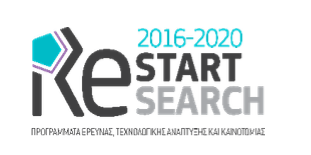AIMorphologyDiagnosis INNOVOUCHER/0722/0029

Collection of morphological features of single cells for developing artificial intelligence methods for early cancer diagnosis
Funding Scheme: Restart Research 2016-2020

Programme: INNOVATION VOUCHERS
Funding Scheme: Restart Research 2016-2020
Project Title: Collection of morphological features of single cells for developing artificial intelligence methods for early cancer diagnosis
Acronym: AIMorphologyDiagnosis
Duration: 15/12/22-15/5/23
Budget: 5.000,00€
Partners:
BioNanoTec LTD (Host Organization)

EUC Research Centre

General Objectives of the project
In our fight against cancer the cancer diagnosis plays a crucial role. Failure of standard cancer therapies has dramatic effects on the health and quality of life of cancer patients and their families, both physically and emotionally. Although many of the current available anti-cancer therapeutic approaches may have significant results, they still may fail if cancer is not detected early and diagnosed appropriately. Therefore, from a societal point of view the benefit from the development of novel diagnostic tools/biomarkers for early cancer diagnosis can improve the efficacy of standard cancer therapies, leading to the desired outcome of prolonged disease-free survival. World Health Organization (WHO) launched the Global Action Plan for the Prevention and Control of Noncommunicable Diseases that aims to reduce by 25% premature mortality from cancer and other diseases (e.g. cardiovascular diseases, diabetes and chronic respiratory) by 2025[1]. Cancer rates are set to increase at an alarming rate globally and immediately actions should be taken. According to the WHO, among the areas where actions can make a difference to controlling cancer is the early detection so as to help treatment and palliative care. Cancer mortality can be reduced if cases are detected early[2]. In absence of any early detection, diagnosis and treatment intervention, patients are diagnosed at very late stages when curative treatment is no longer an option.
Solution suggested by the Host Organization: Cancer development and progression are closely associated with changes in cellular phenotype and cytoarchitecture, extracellular matrix (ECM) structure and in the mechanical properties of both ECM and cancer cells. Very recent work from different ranchers worldwide have demonstrated that AI can be used on morphological characteristics of the cells from optical/fluorescence microscopy [1] or from Atomic Force Microscopy (AFM) [2] for cancer diagnosis. However, these techniques have not been combined. BioNanoTec aims to develop a novel user-friendly software for cancer diagnosis based on microscopy characterization of cells. BioNanoTec will combine AI and machine learning techniques for cancer diagnosis based on optical microscopy images and AFM nanomechanical characterization of the cells. This will enable overcoming the limitation of using data from only one technique (e.g., only nanomechanical characterization with AFM). Problem that the Host Organization faces: BioNanoTec members have a great experience on AFM characterization and have started developing the software using data from AFM nanomechanical characterization of different cell lines. The preliminary data are very encouraging and promising. Furthermore, they have developed a new technique for 3D AFM characterization of the cells and have obtained funding from Cyprus Research and Innovation (CONCEPT/0521/0069) that will help the development of the relevant technique. However, BioNanoTec have no access to optical microscopy images. A small number of figures that have been obtained are not appropriate for the development, training and testing of the software under development. BioNanoTech need a dataset with images and information from cells (of different cancer types) that will correlate their invasive properties with their morphological features.
Solution through the Innovation Voucher: This project will enable the HO collaborate with E.U.C. Research Centre Ltd. (EUC-RC) the Knowledge Intensive Organization. EUC RC will performed experiments so as to create an appropriate dataset that the HO needs for the development of the AI-based software for cancer diagnosis. The dataset will include optical/fluorescence microscopy images and single cell information. This information will correlate the invasive properties of the cells with their morphological characteristics, including cell’s shape and cytoskeleton characteristics (e.g., F-actin fibers content and orientation). The dataset will be used in a future step from the HO for both training the AI code and also testing it. The Innovation Voucher offers mutual benefits for both the organizations. The research results from this project will be used not only for developing the software but also for future research proposals. Finally, this project will further promote the collaboration between the two organizations, create a new work position, help HO to be established in Cyprus Research and Innovation ecosystem and help the Knowledge Intensive Organization to be exposed to the needs of the industry.References
[1] World Health Organization (2015), “Cancer”, http://www.who.int/mediacentre/factsheets/fs297/en/
[2] World Health Organization (2015), “Cancer”, Available from: http://www.who.int/mediacentre/factsheets/fs297/en/